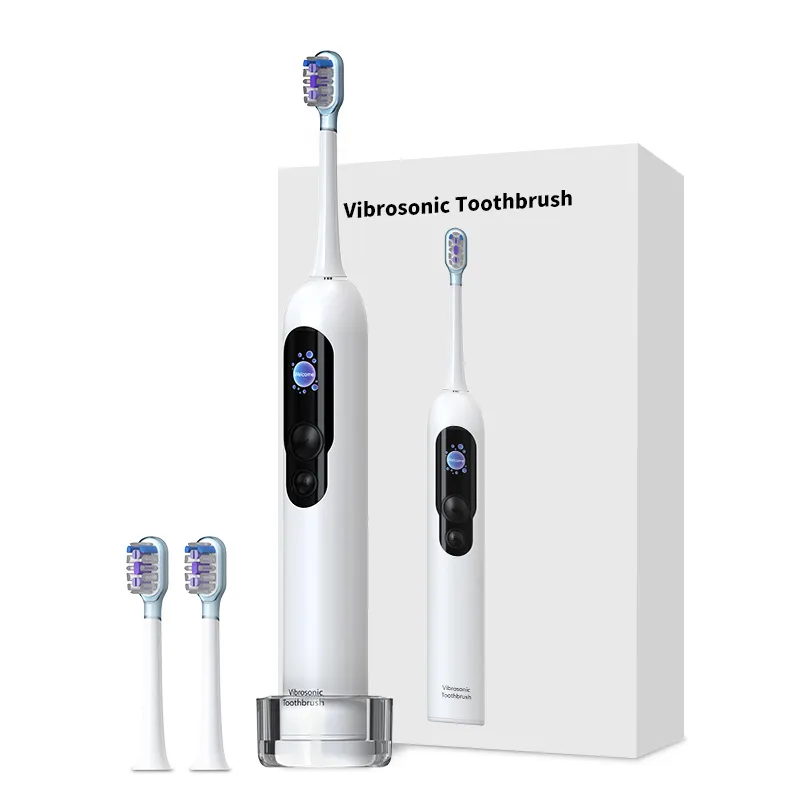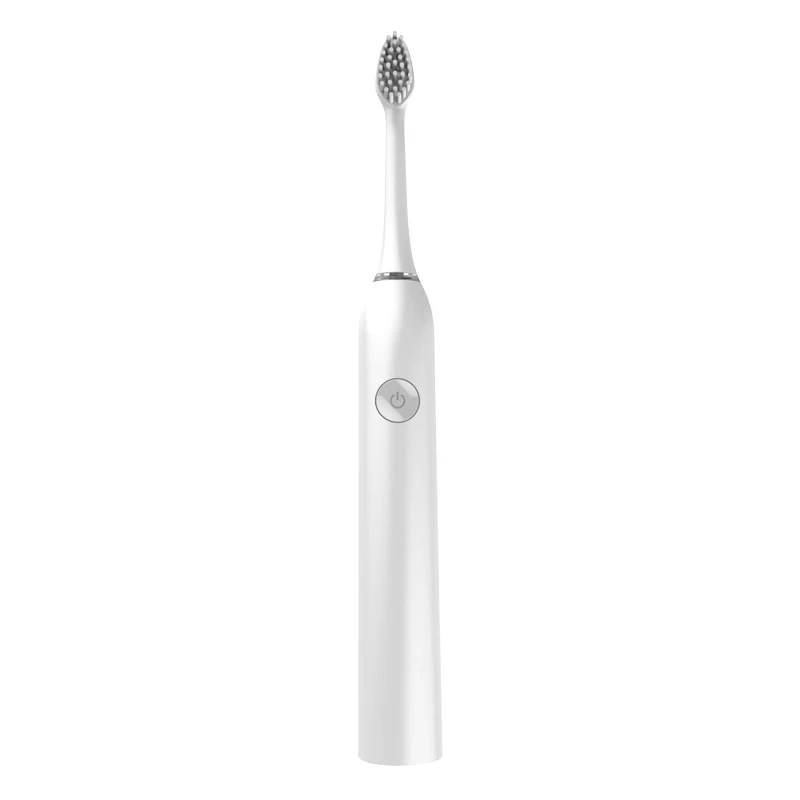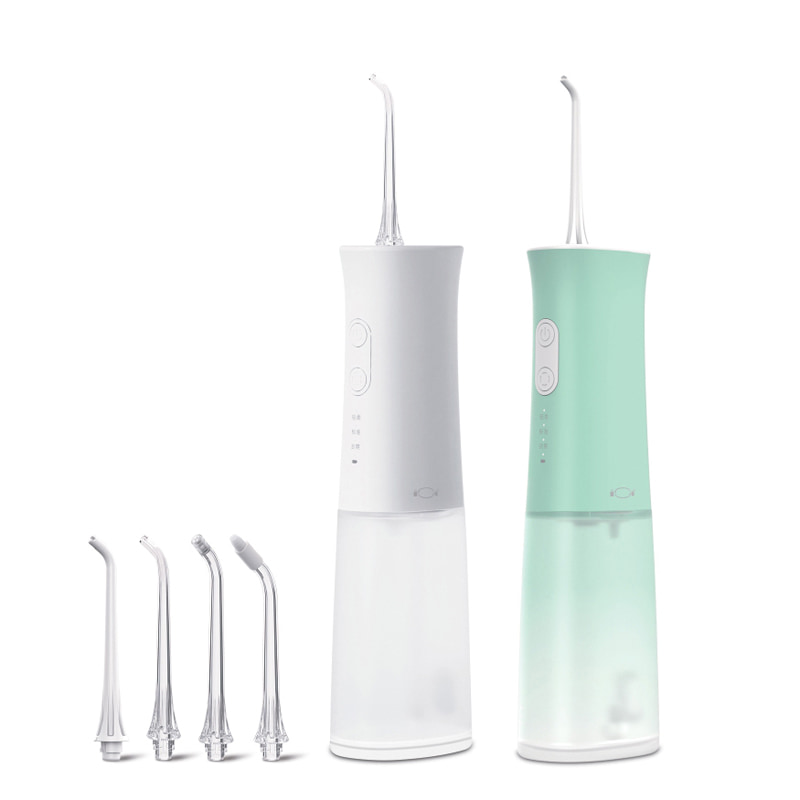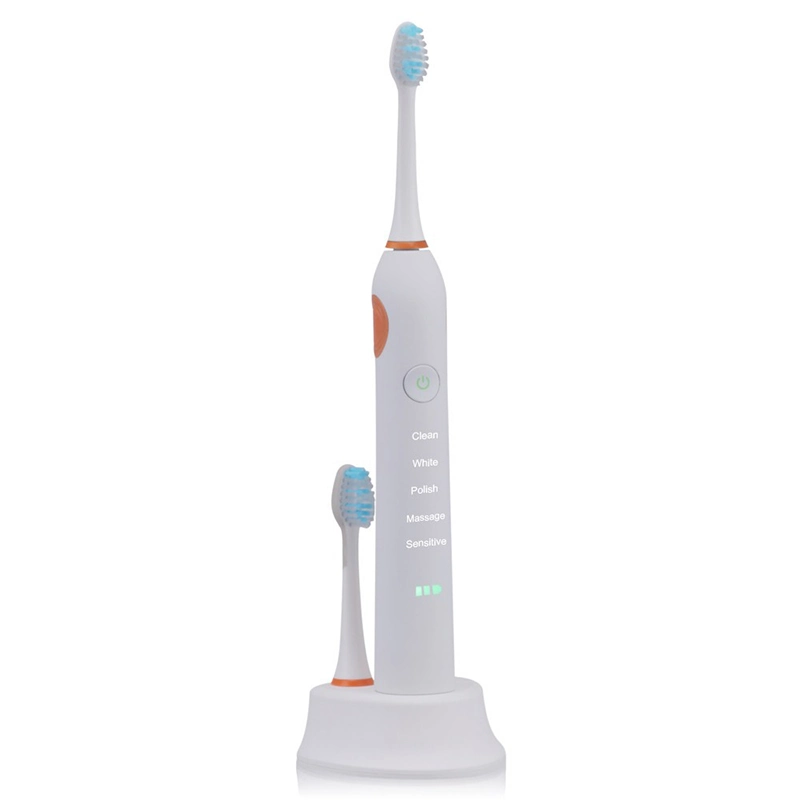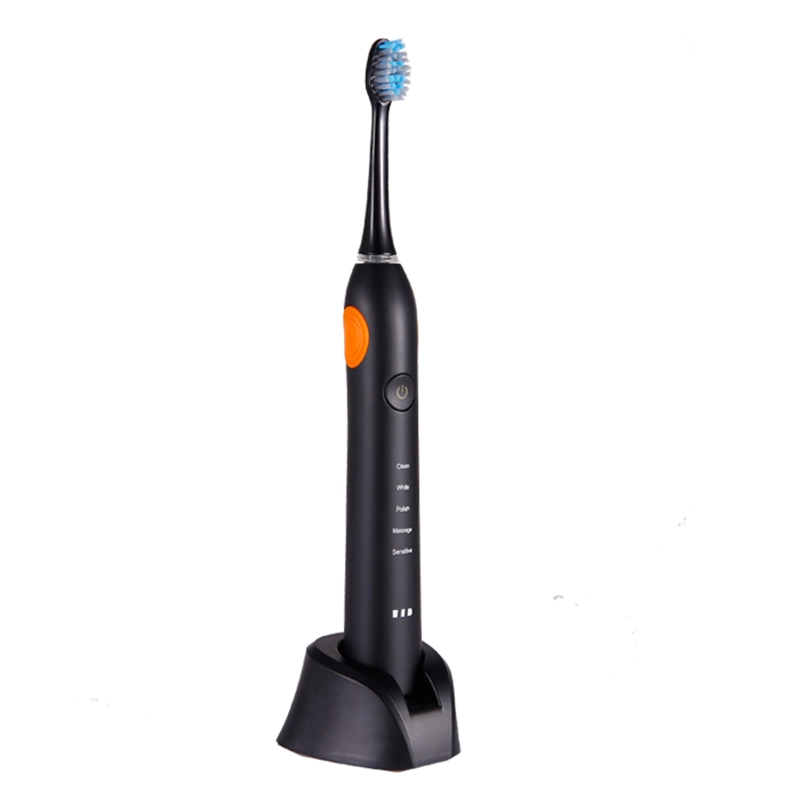A few common questions about electric toothbrushes for consumers
What is an electric toothbrush and how does it work?
When you brush your teeth, you remove plaque, which damages the teeth and can have health consequences. However, with muscle power alone, the conventional toothbrush can only loosen the plaque slowly. The electric toothbrush ensures more effective and faster removal of plaque through very fast movements. The energy is supplied either by batteries or a rechargeable battery. Due to the technology required, the handle of the electric toothbrush is much thicker than a conventional toothbrush, and the brush itself is attached to the handpiece. You replace the brush attachment when the bristles are worn down. So you do not dispose of the entire toothbrush, as with non-electric models, but only the brush.
What are the types of electric toothbrushes?
Oscillating-rotating toothbrushes
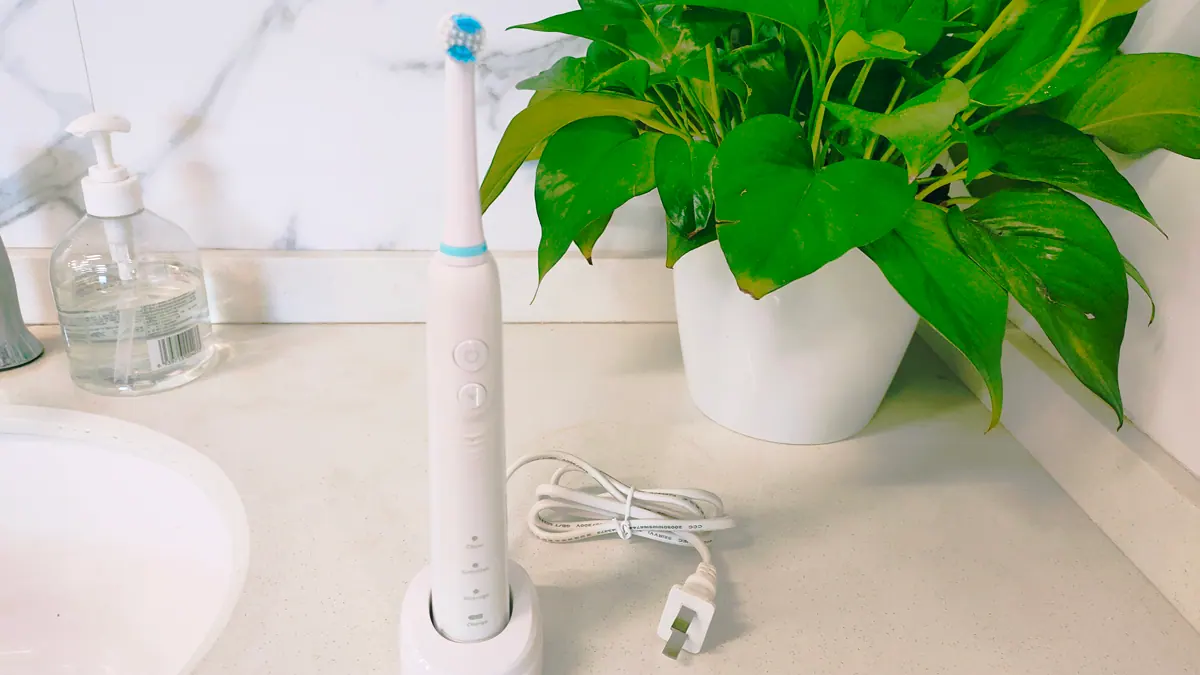
With the round rotating brushes, each tooth is brushed individually. In operation, the bristles oscillate rapidly from side to side, the movements per minute can range from a few hundred to several tens of thousands, with an average of about 9,000 movements per minute. At the same time, the brush rotates back and forth at 50- to 70-degree angles. Some oscillating-rotating toothbrushes combine this with additional pulsating movements. Plaque is reliably removed by this brushing method, but you have to press down on the tooth with the brush and this can damage the enamel. This can be remedied by optical brushing pressure control.
Sonic toothbrushes
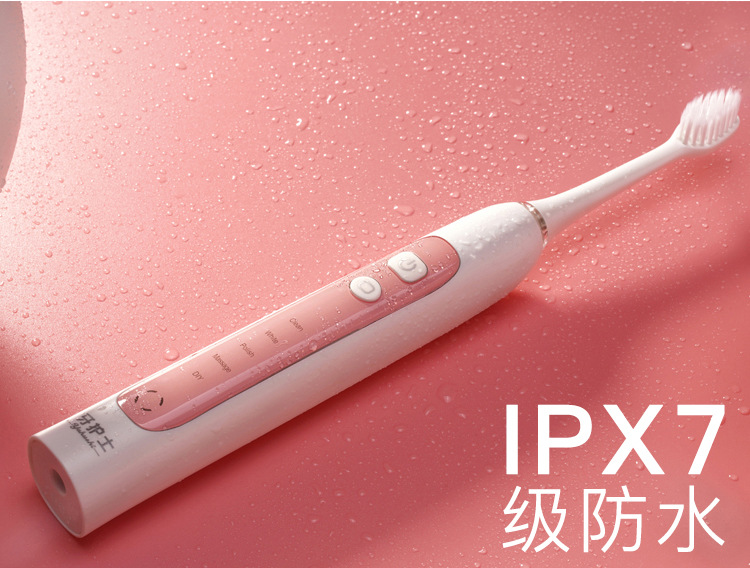
In sonic toothbrushes, the brush head is not round, but rather resembles a manual toothbrush. It does not rotate, but vibrates. This results in tens of thousands of vibrating movements per minute, with so-called "ultrasonic toothbrushes" even significantly more, but these are still quite rare. The sonic toothbrush does not need a lot of pressure to loosen the plaque and is therefore gentler on tooth enamel. The cleaning effect of the sonic toothbrush is usually better than that of oscillating-rotating toothbrushes, but the differences are not too great. Sonic toothbrushes are usually more expensive, this also applies to the additional brush attachments.
What should I look for when buying an electric toothbrush?
Cleaning method
When it comes to electric toothbrushes, you can choose between models with oscillating-rotating brush heads or vibrating sonic toothbrushes. In both categories, there are top models with good tooth cleaning. As a rule, sonic technology is more effective and gentle, but the models and matching replacement brushes are more expensive. Tooth brushing works differently with both methods and also feels different. There is no clear recommendation.
Brushing time signal & pressure control
Many electric toothbrushes have a timer that supports tooth brushing with acoustic signals. So you get indications of how long you should clean individual quadrants of your dentition, and a tone tells you when you're done brushing. The brushing time signal is now part of the basic equipment, even in most inexpensive models. Still, you should make sure that the sound signals are easily audible and understandable. The pressure control also gives signals, acoustically or visually, and thus warns you if you press too hard on the tooth enamel. Only some models have a visual pressure control, mostly the more expensive ones.
Programs & functions
In addition to the normal cleaning of the teeth, the electric toothbrushes offer a different selection of alternative and additional programs. For example, there are settings for gentle cleaning of sensitive teeth, while teeth can be polished to a high shine in the teeth whitening program. In addition, variations of massage and gum care programs are offered. It is mainly the more expensive models that offer three to five settings. Plaque removal is offered with every toothbrush, but if you have special requirements, a comparison is worthwhile.
Battery & charging accessories
Most newer models of electric toothbrushes are powered by a non-replaceable battery, only occasionally you will find devices with battery operation. The latter are somewhat more flexible and you can use rechargeable batteries instead of disposable batteries. However, since the wear and tear is relatively low even with the permanently installed rechargeable batteries, there is hardly any difference in the service life. It's more likely that the motor will break down and you'll have to replace the entire unit anyway. What you should pay attention to with battery models, however, is the charging method. This ranges from a normal power plug to a USB interface, which is especially practical for traveling, to wireless inductive charging.
Storage
Even if you use the electric toothbrush every day, practical storage is an important point. Rechargeable devices usually come with a charging station, on which you plug the handpiece to charge it between uses. There are often slots on the charging station for storing two or more brush attachments - but not always. For travel or extended storage, a matching case may also be included to store the handpiece and brushes. Additionally, some models have a travel lock so the toothbrush won't accidentally respond to a button press while in your pocket. The scope of delivery varies greatly.
Spare parts
The brush attachment of the electric toothbrush must be replaced regularly. On the one hand, dirt and bacteria collect, and on the other hand, the bristles wear out. All manufacturers of electric toothbrushes offer suitable replacement attachments, but the price varies greatly: per brush attachment you pay between less than 2 euros and over 10 euros. So in addition to the purchase cost of the device, there are the running costs. If you buy the replacement brushes in packs of larger numbers, it is usually cheaper. Spare parts such as charging stations or power cords are often available in limited quantities. The battery usually can't be replaced anyway, and if the motor is defective, it's almost never worth repairing because you can get a new device for the same money.
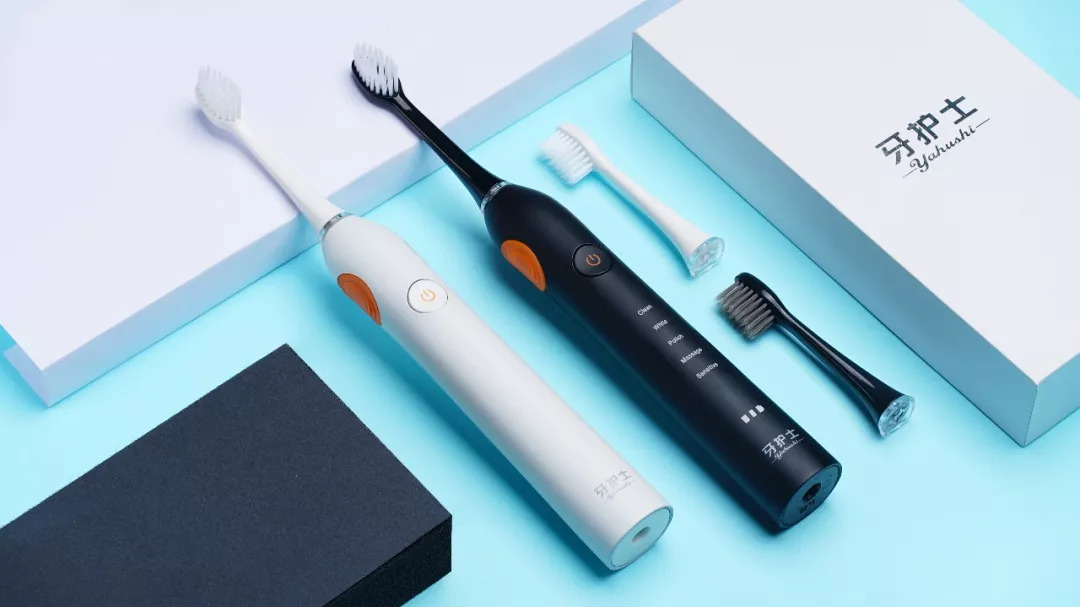
What should I pay attention to when brushing my teeth?
Experts advise brushing your teeth after every meal, but very few people do this. The majority of Germans brush their teeth twice a day, in the morning and in the evening. This is sufficient, but the absolute minimum. When it comes to brushing, it's all about the right technique. This varies depending on the method used: with conventional toothbrushes, you have to use shaking movements to loosen the plaque and then brush away from the gums to the crown of the tooth. With a rotating electric toothbrush, this works more effectively and thoroughly. Place the round brush at the gumline and move it along the gumline to clean each tooth individually. The sonic toothbrush does not rotate, but loosens the plaque through vibration. You therefore place the brush head at a 45-degree angle on the gumline and scrape the dirt away downward.
Regardless of the method, however, you must always pay attention to the pressure. If you press on the brush too hard, you can damage your teeth and gums. Some electric toothbrushes therefore have a visual pressure control that warns if you are scrubbing too hard. Otherwise, you have to be careful yourself not to overdo it. The sonic toothbrush loosens the plaque with its vibrations even at low pressure, but even the oscillating-rotating round head only has to sit with the bristle tips on the tooth. In general, a fixed brushing sequence is useful, in which you clean the front and then the back sides, for example, so as not to forget any tooth.
What else is part of oral hygiene?
The electric toothbrush cleans more effectively than the conventional toothbrush, but still only cleans the tooth surface. Whichever way you choose to brush your teeth, the interdental spaces need extra attention. You cannot do without regular use of dental floss or interdental brushes. For additional oral hygiene, you can also use an oral irrigator. This can be used to clean hard-to-reach areas of the mouth. You can find out more about this in our mouthwash buying guide. For the complete effect, you should also clean your tongue separately.
But even if you clean thoroughly in all accessible places in the dentition, small residues always remain. So professional teeth cleaning does have a benefit. For perfect dental health, experts recommend the procedure twice a year. Dental cleaning by professionals removes stubborn plaque and thoroughly cleans interdental spaces. In addition, teeth are polished to give bacteria less of a foothold and treated with fluoride gel, which restores minerals to the tooth surface. Some health insurers cover at least part of the cost of teeth cleaning, but you usually have to dip into your own pocket.
As a professional manufacturer of electric toothbrush and oral irrigator / water flosser, Shenzhen Relish provides various types of electric toothbrush wholesale and OEM customized services. You can also wholesale water flosser from Relish at factory price. We can provide you highly competitive prices and look forward to working with you.

- All comments(0)

 日本語
日本語 Español
Español Deutsch
Deutsch 中文
中文